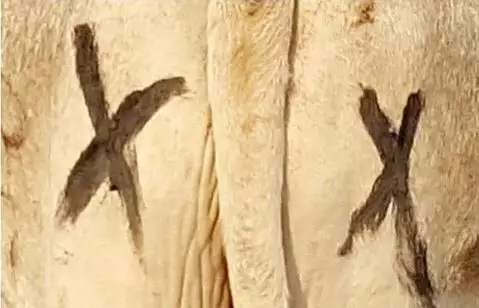
Drawing eyes on the backsides of cows is an effective way to scare off predators, a new study has found.
In the four-year study, researchers tested out the method on 14 different herds in northern Botswana, where animals had been under threat from powerful predators like lions, leopards, cheetahs and hyenas.
The team from the University of New South Wales (UNSW) divided the animals into three groups, testing out two different 'eyespots' - one that resembled eyes, and another simpler style that was just a cross - while leaving the third without any.
Advert
It turns out the eyes were surprisingly effective, while the simple crosses didn't fare too badly in the experiment.

"In this study, we tested whether conspicuous artificial eyespots applied to livestock would deter attacks by ambush predators," the authors wrote in their paper, which was published in weekly scientific journal Nature.
"Our results suggest that artificial eyespots painted on to livestock were successful in deterring lions from attacking cattle.
Advert
"Our results also suggest that simple crosses were moderately effective."
The team had been inspired by 'eyespots' often found on other species including certain types of butterflies and birds.
The evolutionary phenomenon seen with such animals involves markings that look like eyes, deterring would-be predators as they approach, as they think they are being watched.

Advert
While you may laugh at the sheer simplicity of the idea, this is something the researchers say is an advantage, as it means the measure could prove a cost-effective solution for farmers needing to protect cattle.
"To our knowledge, this is the first time eyespots have been shown to deter large mammalian predators," they wrote.
"Applying artificial marks to high-value livestock may therefore represent a cost-effective tool to reduce livestock predation."
The eyespots could also help cattle and their predators live alongside each other in harmony - well, relative harmony.
Advert
The authors added: "The majority of reported predator attacks on livestock in the community (Shorobe) were by ambush predators - African lion (Panthera leo), and leopard (P. pardus), respectively - and farmers and herders direct a considerable and understandable degree of antipathy toward these predators.
"Given the high tourism and ecological value of these apex predators, there is a clear need to resolve these conflicts while also protecting large carnivores and rural traditions and livelihoods."
Featured Image Credit: University of New South Wales